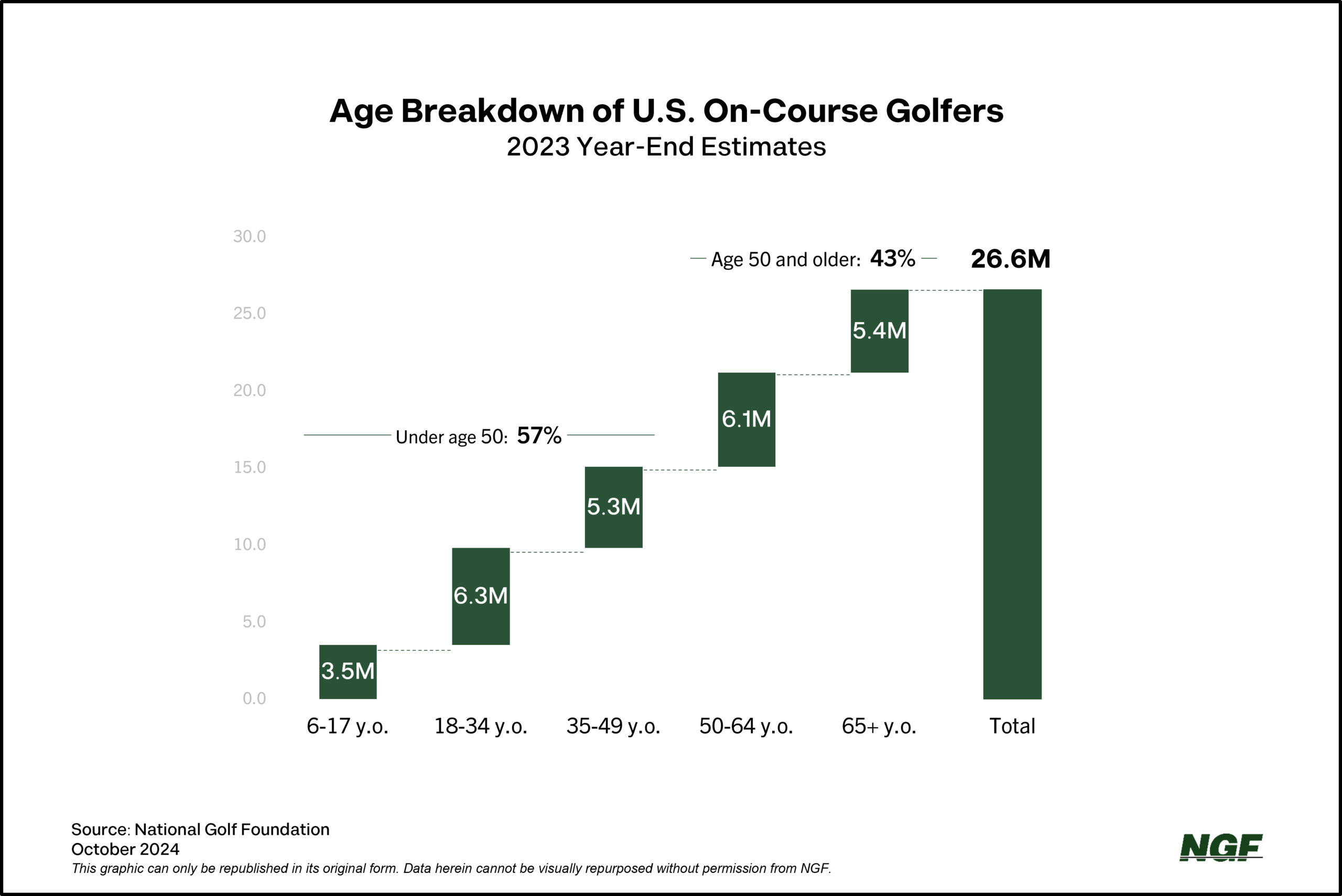Golf is a game for a lifetime – one that can be played from age 3 to 103.
Yes, those numbers are alliterative and provide a tidy 100-year age gap. But they also speak to possibility.
In 2001, a then 3-year-old tyke named Jake Paine used his Snoopy driver to ace a 66-yard par 3 at an executive course in California. And just under a decade ago, a former teaching pro named Gus Andreone made a hole-in-one at the spry age of 103 on a 125-yard par 3 in Florida. He also hit a driver.
The average age of an on-course golfer in the U.S. today is 43.5.
So, with the influx of new golfers in the post-Covid era and the perceptions that the game is becoming younger and cooler, has the average age of a golfer changed much? NGF research shows that 71% of the post-pandemic rounds growth has come from golfers under the age of 50.
Compared to five years ago, the age of golfers is down by just over one full year (44.6 in 2018 and 2019).
It actually should be somewhat of a surprise that the average golfer age has moved the way it has. And perhaps, the direction it has.
In a sport with over 26 million on-course participants, shifts like these can be glacial.
It’s also worth noting that Baby Boomers are still turning 65 at a rate of about 10,000 per day (and will continue to do so until 2029), a trend that’s seen golf participation in the 65+ age cohort to increase by almost 64% in the past 10 years.
Yet in a sport that many perceive as “older,” the largest group of on-course golfers is the age 18 to 34 cohort, with nearly 6.3 million.

This young adult window is typically when many take up the game, and this participant pool has continued to incrementally rise in recent years as younger players engage with golf in a variety of new ways – from embracing social media and new apparel trends to consumption of non-traditional media (and heightened engagement with YouTubers and other content creators in addition to traditional professional golfers).
To be fair, the young adult cohort has a slightly wider age range than several of the other age groups. And the 50-64 cohort is close behind at 6.1 million, followed by the 65+ seniors, at 5.4 million. Another important and possibly intuitive consideration when it comes to age: it’s the older golfers who play and spend the most. That, however, typically has more to do with time, opportunity and discretionary dollars, rather than interest.
It wasn’t long ago that you could find clickbait articles that Millennials were “giving up on golf.” Those headlines don’t seem to be aging well.
For more on the demographics of golfers, including age trends, click here for an accompanying Full Shots piece.. or we invite you to become an NGF member and help support the research we do for the industry at large.